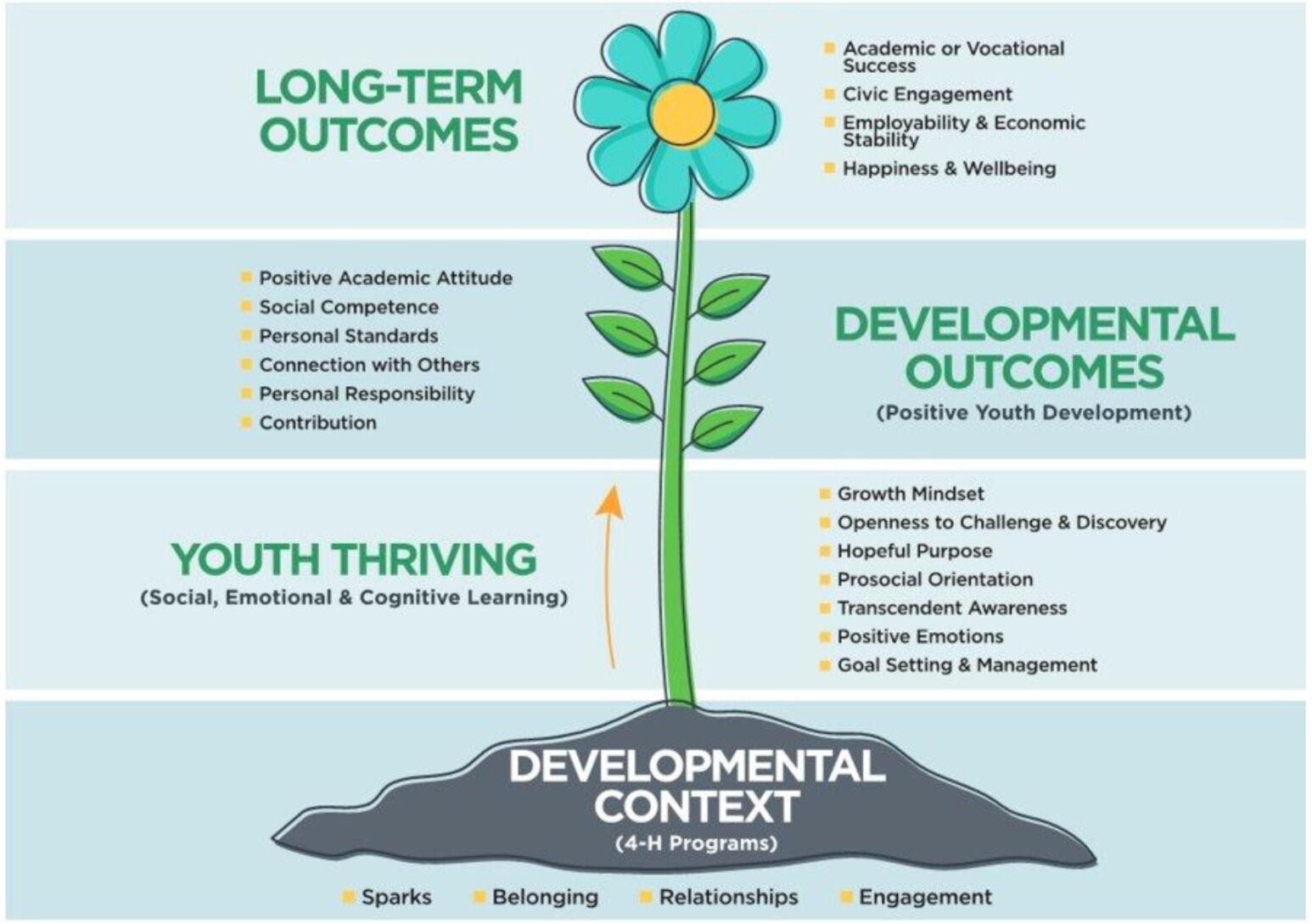Grow with 4-H

The process of developmental growth through participation in 4-H programming.
4-H starts at the junior level by planting the seed of 4-H programs through which youth gain belonging, relationships and engagement within and outside of their peer groups to learn the basis principles of what it takes to be a part of something bigger than themselves.
In secondary context, youth work to grow through their social, emotional, and cognitive learning abilities. In the social aspect a 4-H’er will learn to increase the effectiveness of their relationships by mastering goal setting and management, transcendent awareness, openness to challenge and discovery. Navigating these social complexities help to promote growth mindset and positive emotions at the individual and peer-group levels. These factors lead to the sprouting and thriving of youth.
The initial developmental outcomes in 4-H are centered around positive youth development. The “leaves of development” include positive academic attitude, social competence, personal standards, connection with others, personal responsibility, and contribution. Positive academic attitude is especially important in academic experiences as it leaves an individual with more favorable opinion toward pursuing higher education. Social competence, connection with others and contribution all lead to more effective relationships with peer groups, family members and authority figures. While personal responsibility attributes to greater independence.
Ultimately, youth involved in 4-H youth development will spring out of the program in bloom to successfully demonstrate the long-term outcomes of academic or vocational success, civic engagement, employability and economic stability, and happiness and wellbeing. The compilation of these long-term development outcomes equates to a higher potential for life satisfaction and life-long learning and curiosity.